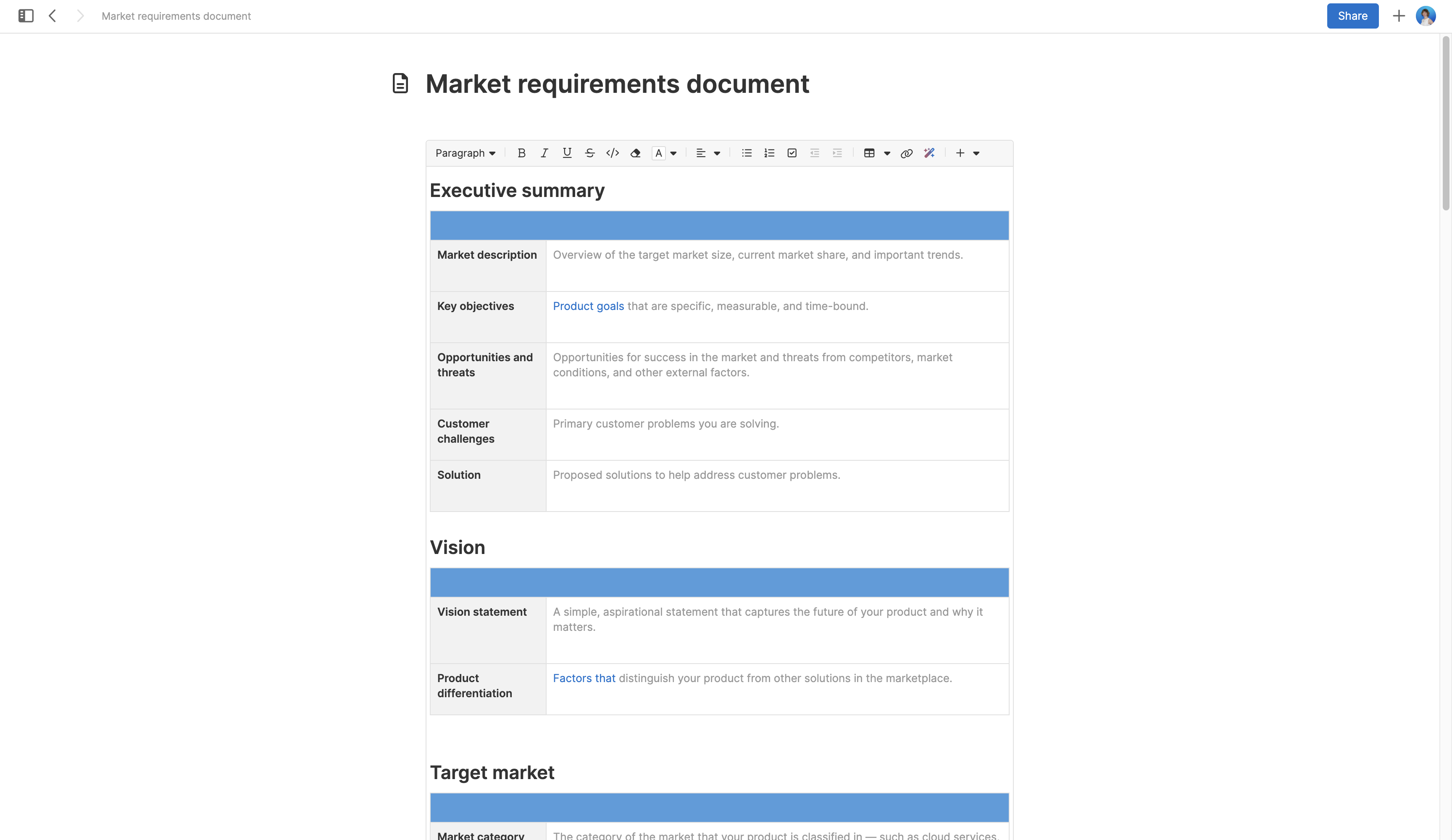What is a market requirements document?
A market requirements document (MRD) describes an overall market opportunity — including the size of the market, the types of customers you will target, and competitors in the space. An MRD helps to consolidate your market research into a convenient overview. It also outlines the high-level product capabilities required to meet customer needs and gain an advantage over other solutions.
An MRD is often confused with a product requirements document (PRD) but they have distinct purposes. While an MRD summarizes market and customer needs, a PRD describes how the product should be built to meet those needs. Because the MRD informs the PRD, you should create the MRD first — this ensures the product team clearly understands your prospective customers before you build solutions for them.
In this guide we will explore the benefits of writing an MRD and what to include in yours. This will provide you with a foundation for working in Aha! Roadmaps to define MRDs and then manage product development end-to-end. If you want to get started quickly, Aha! software offers a lightweight MRD note template — which comes with helpful hints and instructions. That way you can easily write, update, and validate your MRD as you gain new insights.
Customize an MRD in Aha! software. Try it for free.
